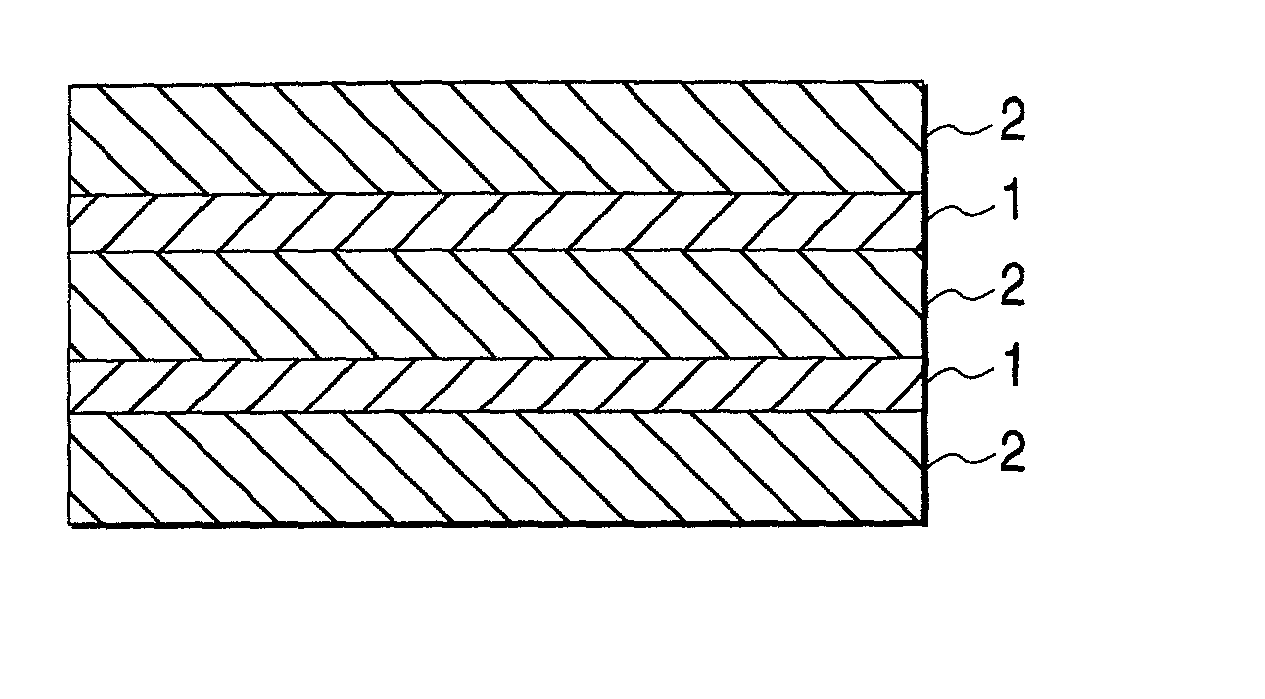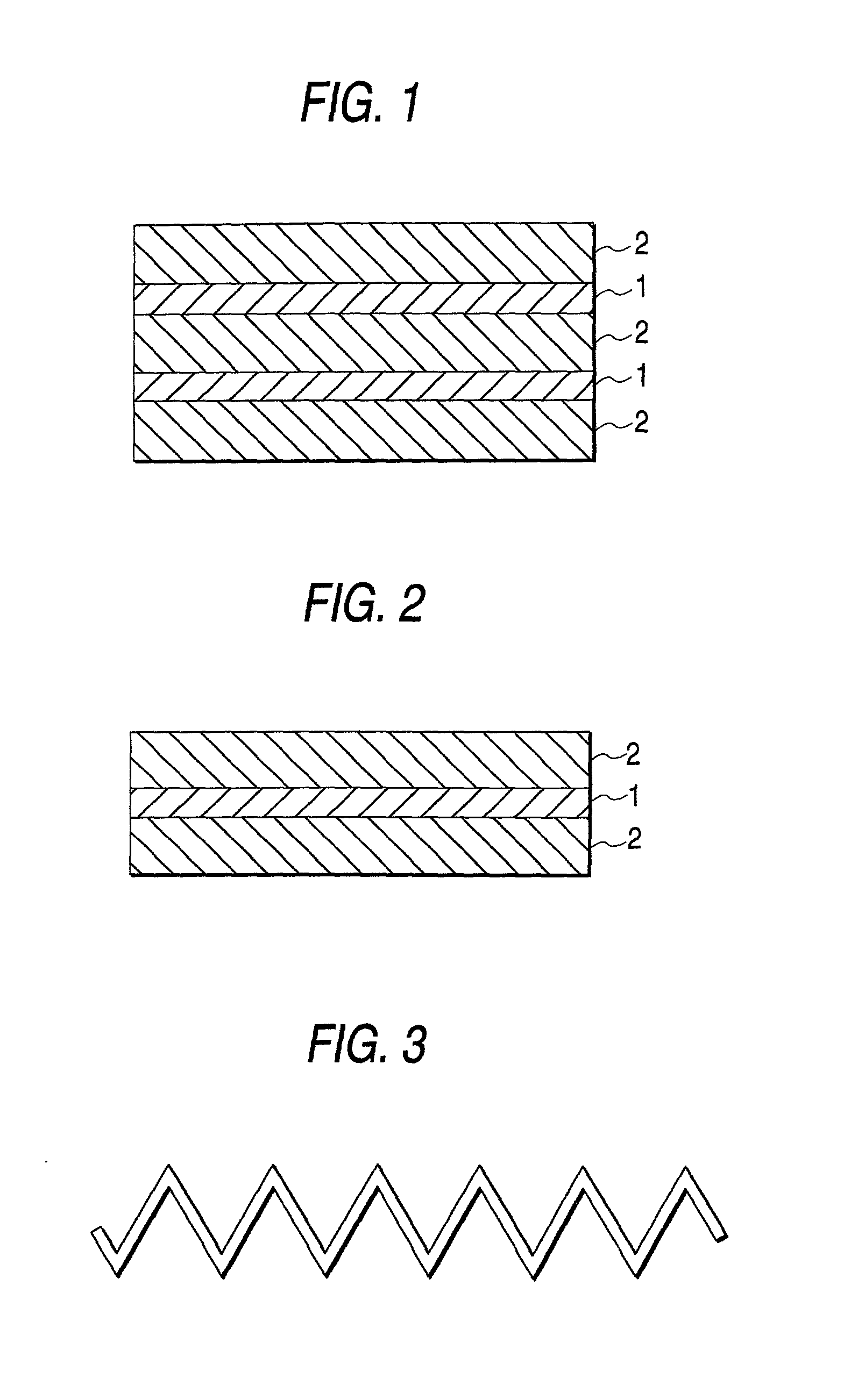Filtering medium for air filter and process for producing the same
- Summary
- Abstract
- Description
- Claims
- Application Information
AI Technical Summary
Benefits of technology
Problems solved by technology
Method used
Image
Examples
example 2
[0047] The filtering medium obtained in Example 1 was pleated into the shape of consecutive W's with a reciprocating pleating machine, while continuously eliminating the static charge built up thereon using a static eliminator (the same as the aforementioned one) disposed by the filtering medium on the downstream side of the pleating machine. Thus, a filtering medium for air filters which had been pleated was obtained. This filtering medium was stretched out by a hand with an insulating glove, and the surface potential thereof was measured and found to be 0.2 kV. Furthermore, the filtering medium in the stretched state was touched with the bare hand, and the part thus touched was examined for collection efficiency. As a result, the collection efficiency for particles having a particle diameter range of from 0.1 to 0.2 .mu.m was 99.999999%, and the downstream side count of particles having a particle diameter range of from 0.2 to 0.3 .mu.m was 0. Thus, this filtering medium was ascer...
PUM
| Property | Measurement | Unit |
|---|---|---|
| Surface potential | aaaaa | aaaaa |
| Electric charge | aaaaa | aaaaa |
| Shape | aaaaa | aaaaa |
Abstract
Description
Claims
Application Information
 Login to View More
Login to View More - R&D
- Intellectual Property
- Life Sciences
- Materials
- Tech Scout
- Unparalleled Data Quality
- Higher Quality Content
- 60% Fewer Hallucinations
Browse by: Latest US Patents, China's latest patents, Technical Efficacy Thesaurus, Application Domain, Technology Topic, Popular Technical Reports.
© 2025 PatSnap. All rights reserved.Legal|Privacy policy|Modern Slavery Act Transparency Statement|Sitemap|About US| Contact US: help@patsnap.com



